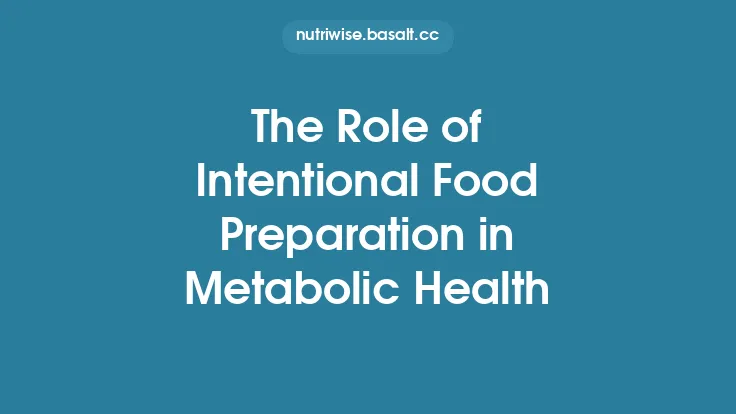The gut is far more than a simple conduit for food; it is a dynamic, highly regulated ecosystem that directly shapes how the nutrients and bioactive compounds we ingest are transformed, transported, and ultimately utilized by the body. While many discussions about supplements focus on the amount taken, the time of day, or the presence of food, an equally critical—and often overlooked—factor is the health of the gastrointestinal (GI) tract itself. When the gut is functioning optimally, it acts as a finely tuned gateway that maximizes the bioavailability of vitamins, minerals, phytochemicals, and other supplemental ingredients. Conversely, disturbances in gut integrity, microbiota composition, or enzymatic activity can dramatically diminish the proportion of a supplement that reaches systemic circulation, rendering even the most carefully formulated product less effective.
Understanding the mechanisms by which gut health influences supplement bioavailability provides a foundation for making informed choices about both the supplements we select and the lifestyle practices that support their absorption. Below, we explore the key physiological and microbial processes that govern this relationship, examine how common gut disturbances interfere with nutrient uptake, and outline evidence‑based strategies to nurture a gut environment that promotes optimal supplement utilization.
Understanding the Gut Environment and Its Influence on Absorption
1. Anatomical segmentation and surface area
The small intestine—particularly the duodenum and jejunum—offers the greatest surface area for nutrient absorption, thanks to villi, microvilli, and the brush‑border membrane. The density and health of these structures dictate the capacity for both passive diffusion and active transport of supplemental compounds. For instance, a well‑vascularized villus with intact microvilli can efficiently ferry water‑soluble vitamins (e.g., B‑complex, vitamin C) via carrier proteins, while a flattened or atrophied villus reduces the effective absorptive area, limiting uptake.
2. pH gradients
Gastric acidity (pH 1–3) initiates the breakdown of many oral supplements, especially those containing minerals that require solubilization (e.g., iron, calcium). As chyme moves into the duodenum, pancreatic secretions raise the pH to 6–7, creating an environment conducive to enzymatic activity and the dissolution of certain compounds. An abnormal pH—whether from hypochlorhydria, chronic antacid use, or bacterial overgrowth—can impair the dissolution of poorly soluble supplements, decreasing their bioavailability.
3. Enzymatic landscape
Brush‑border enzymes (e.g., lactase, sucrase, peptidases) and pancreatic enzymes (e.g., lipase, amylase, proteases) are essential for converting complex supplement matrices into absorbable units. For example, many herbal extracts are delivered as glycosides that must be hydrolyzed before the aglycone can be absorbed. A deficiency in these enzymes, whether genetic or disease‑related, can leave a substantial fraction of the supplement unprocessed.
4. Motility and transit time
The coordinated peristaltic waves of the small intestine regulate the residence time of nutrients and supplements. Too rapid a transit (as seen in diarrhea or hypermotility disorders) shortens exposure to absorptive surfaces, while excessively slow transit (as in constipation) may lead to degradation of labile compounds by bacterial overgrowth. Both extremes can diminish the net amount of supplement that reaches the bloodstream.
Microbiome‑Mediated Metabolism of Supplements
1. Biotransformation of phytochemicals
The gut microbiota possesses a vast enzymatic repertoire capable of converting polyphenols, flavonoids, and other plant‑derived compounds into metabolites with altered absorption profiles. For instance, the microbial deglycosylation of quercetin glycosides yields the aglycone quercetin, which is more readily absorbed. Conversely, certain microbes can further degrade these metabolites into inactive forms, reducing overall bioavailability.
2. Production of short‑chain fatty acids (SCFAs)
Fermentation of dietary fibers by commensal bacteria generates SCFAs (acetate, propionate, butyrate) that influence intestinal epithelial health. Butyrate, in particular, strengthens tight junctions and promotes the expression of nutrient transporters (e.g., SGLT1 for glucose, PEPT1 for di‑ and tripeptides). A microbiome that efficiently produces SCFAs can therefore indirectly boost the uptake of amino‑acid‑based supplements and peptide‑derived nutraceuticals.
3. Modulation of bile acid pools
Certain gut bacteria deconjugate and transform primary bile acids into secondary bile acids. This process affects the micellar solubilization of fat‑soluble vitamins (A, D, E, K) and lipid‑based supplements such as omega‑3 fatty acids. An imbalanced bile‑acid profile—common in dysbiosis—can impair the formation of mixed micelles, limiting the intestinal absorption of these lipophilic compounds.
4. Synthesis of vitamins and cofactors
Many gut microbes synthesize B‑vitamins (e.g., B12, folate, biotin) and vitamin K2. While endogenous production contributes to baseline nutritional status, it can also affect the apparent bioavailability of supplemental forms. For example, a robust B12‑producing microbiota may reduce the incremental benefit of oral cyanocobalamin, whereas a depleted microbial community may necessitate higher supplemental doses to achieve the same systemic levels.
Intestinal Barrier Integrity and Bioavailability
1. Tight junction dynamics
The epithelial barrier is maintained by tight junction proteins (claudins, occludin, ZO‑1). When these proteins are compromised—through inflammation, infection, or chronic stress—the barrier becomes “leaky,” allowing macromolecules and bacterial endotoxins (LPS) to translocate into the lamina propria. This low‑grade endotoxemia triggers systemic inflammation, which can down‑regulate nutrient transporters and alter hepatic metabolism, ultimately reducing the effective bioavailability of supplements.
2. Mucus layer thickness
A healthy mucus layer, rich in mucins, serves as a protective barrier and a habitat for beneficial microbes. Thinning of this layer (as seen in ulcerative colitis or after excessive NSAID use) exposes the epithelium to direct bacterial contact, potentially disrupting transporter function and increasing the degradation of labile supplements before they can be absorbed.
3. Immune surveillance
Gut‑associated lymphoid tissue (GALT) monitors luminal contents and can mount immune responses that affect absorption. Chronic activation of GALT—common in food sensitivities or autoimmune gut disorders—leads to cytokine release (e.g., TNF‑α, IL‑6) that can down‑regulate expression of key transporters such as DMT1 (iron) and NRAMP2 (zinc), thereby limiting the uptake of mineral supplements.
Transport Mechanisms and the Role of Gut Health
1. Carrier‑mediated active transport
Many vitamins and minerals rely on specific carrier proteins (e.g., the sodium‑dependent vitamin C transporter SVCT1, the folate receptor FRα). The expression and functionality of these carriers are modulated by gut health. For instance, chronic inflammation can suppress SVCT1 transcription, reducing vitamin C absorption even when supplementation is adequate.
2. Facilitated diffusion and passive permeability
Lipophilic compounds (e.g., coenzyme Q10, curcumin) often cross the intestinal epithelium via passive diffusion, a process heavily dependent on membrane fluidity. Alterations in membrane phospholipid composition—driven by dysbiosis or malabsorption of essential fatty acids—can stiffen the membrane, hindering passive diffusion and lowering bioavailability.
3. Endocytosis and transcytosis
Large molecules such as certain peptide‑based supplements (e.g., collagen hydrolysates) may be internalized via receptor‑mediated endocytosis. The efficiency of this pathway is contingent on the health of the enterocytes and the presence of appropriate receptors, both of which can be down‑regulated in conditions like celiac disease.
Impact of Gut Dysbiosis and Common Conditions
| Condition | Primary Gut Alteration | Effect on Supplement Bioavailability |
|---|---|---|
| Small Intestinal Bacterial Overgrowth (SIBO) | Excessive bacterial fermentation in the proximal small intestine | Deconjugation of bile acids → impaired micelle formation → reduced absorption of fat‑soluble vitamins and omega‑3s |
| Irritable Bowel Syndrome (IBS) | Altered motility and visceral hypersensitivity | Rapid transit in diarrhea‑predominant IBS → decreased contact time for nutrient uptake |
| Celiac Disease | Villous atrophy, increased intestinal permeability | Loss of absorptive surface → markedly reduced uptake of iron, folate, calcium, and fat‑soluble vitamins |
| Inflammatory Bowel Disease (IBD) | Chronic inflammation, ulceration, dysbiosis | Cytokine‑mediated down‑regulation of transporters; mucosal damage → poor absorption of most oral supplements |
| Chronic Use of Proton Pump Inhibitors (PPIs) | Reduced gastric acidity | Impaired solubilization of minerals (e.g., iron, calcium carbonate) → lower bioavailability |
| Antibiotic‑Induced Dysbiosis | Depletion of beneficial microbes, reduced SCFA production | Diminished expression of nutrient transporters; altered bile‑acid metabolism → compromised absorption of both water‑ and fat‑soluble compounds |
These examples illustrate that the same supplement can have dramatically different systemic outcomes depending on the underlying gut milieu. A supplement that is highly bioavailable in a healthy individual may be only partially absorbed—or even ineffective—in someone with compromised gut health.
Strategies to Optimize Gut Health for Better Supplement Utilization
1. Support a diverse, resilient microbiome
- Prebiotic fibers (inulin, fructooligosaccharides, resistant starch) feed beneficial bacteria, enhancing SCFA production and strengthening the epithelial barrier.
- Probiotic strains such as *Lactobacillus plantarum, Bifidobacterium longum, and Akkermansia muciniphila* have demonstrated abilities to up‑regulate nutrient transporters and improve mucosal integrity.
- Synbiotic combinations (pre‑ + probiotic) can synergistically boost colonization and functional outcomes, especially when timed to coincide with supplement ingestion (e.g., taking a probiotic capsule shortly before a polyphenol supplement to aid its microbial conversion).
2. Maintain optimal gastric acidity
- Avoid chronic overuse of antacids or PPIs unless medically indicated.
- Incorporate natural acid‑promoting foods (e.g., apple cider vinegar, lemon juice) in moderation to support mineral solubilization.
3. Preserve mucosal health
- Glutamine and N‑acetylcysteine are conditionally essential amino acids that serve as fuel for enterocytes and antioxidants for the gut lining, respectively.
- Omega‑3 fatty acids (EPA/DHA) have anti‑inflammatory properties that can reduce cytokine‑mediated transporter down‑regulation.
4. Manage intestinal inflammation
- Adopt an anti‑inflammatory dietary pattern rich in polyphenol‑dense foods (berries, green tea, turmeric) while limiting processed sugars and trans‑fats that promote dysbiosis.
- Consider targeted nutraceuticals such as curcumin (with a bioavailability enhancer like piperine) to attenuate low‑grade inflammation that may otherwise impair absorption.
5. Optimize motility
- Regular physical activity stimulates peristalsis, ensuring adequate contact time without causing stasis.
- Adequate hydration and fiber intake help normalize transit, preventing both rapid diarrhea and sluggish constipation that can interfere with supplement uptake.
6. Periodic gut health assessment
- Stool microbiome analysis can identify dysbiotic patterns and guide personalized probiotic or dietary interventions.
- Intestinal permeability tests (e.g., lactulose/mannitol ratio) provide insight into barrier integrity, informing whether additional gut‑supportive nutrients are warranted before initiating a new supplement regimen.
Practical Considerations When Choosing Supplements for a Compromised Gut
- Formulation matters
- Chelated minerals (e.g., magnesium glycinate, iron bisglycinate) are less dependent on acidic environments and may be better absorbed in individuals with reduced gastric acidity.
- Liposomal or nano‑emulsion delivery systems encapsulate fat‑soluble vitamins and phytochemicals, bypassing some of the limitations imposed by impaired micelle formation.
- Enteric‑coated tablets protect acid‑labile compounds (e.g., certain probiotics, enzymes) from premature degradation in the stomach, delivering them to the small intestine where absorption is optimal.
- Co‑administration with gut‑supportive agents
- Pairing a probiotic with a polyphenol supplement can enhance microbial conversion, while a small amount of dietary fat (e.g., a teaspoon of olive oil) can aid the absorption of lipophilic nutrients without invoking the broader timing considerations that fall under other articles.
- Including a modest dose of digestive enzymes (e.g., bromelain, papain) may improve the breakdown of complex herbal extracts, especially in individuals with pancreatic insufficiency.
- Start low, go slow
- For those with known malabsorption, initiating supplementation at a lower dose allows the gut to adapt and reduces the risk of adverse GI symptoms that could further compromise the barrier. Gradual titration can also give the microbiome time to adjust to new substrates.
- Monitor clinical outcomes
- Biomarkers (serum ferritin, 25‑OH vitamin D, plasma omega‑3 index) should be tracked periodically to verify that the chosen supplement is achieving the intended systemic levels, especially when gut health is a known variable.
Future Directions and Emerging Research
- Targeted microbiome engineering: CRISPR‑based editing of gut bacteria to express specific enzymes (e.g., β‑glucosidase for flavonoid activation) holds promise for customizing supplement metabolism on an individual basis.
- Personalized transporter profiling: Advances in intestinal organoid technology enable ex‑vivo testing of an individual’s transporter expression, allowing clinicians to predict which supplement forms (e.g., chelated vs. inorganic minerals) will be most bioavailable.
- Metabolomics‑guided supplementation: Comprehensive profiling of gut‑derived metabolites can reveal deficiencies in microbial conversion pathways, guiding the selection of prebiotic or probiotic adjuncts that will maximize the efficacy of a given supplement.
- Nanotechnology for barrier traversal: Research into bio‑inspired nanoparticles that can transiently open tight junctions without inducing inflammation may one day allow for controlled, enhanced delivery of otherwise poorly absorbed nutraceuticals.
In summary, the health of the gastrointestinal tract is a cornerstone of supplement bioavailability. From the microscopic architecture of the villi to the vast metabolic capabilities of the resident microbiota, each component of the gut ecosystem can either facilitate or hinder the journey of a supplemental molecule from ingestion to systemic circulation. By nurturing a balanced microbiome, preserving barrier integrity, and selecting supplement formulations that align with one’s gut status, individuals can markedly improve the effectiveness of their nutritional strategies—transforming a simple pill or powder into a truly bioavailable ally for health.





